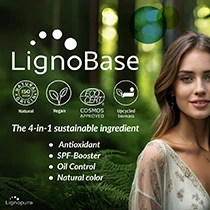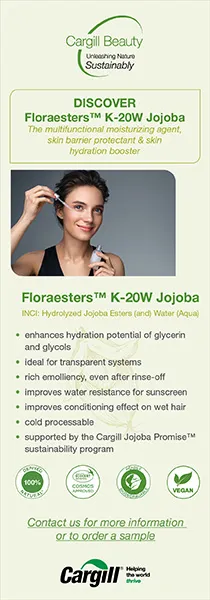EC to remove unregulated Methyl Salicylate products from markets this year

17 Oct 2022 --- The European Commission (EC) is restricting the use of Methyl Salicylate, an agent used for its fragrant, flavoring and soothing properties in cosmetics, due to its potential to cause irritations and acute toxicity.
Under Regulation 2022/1531 or Omnibus Act V, the restrictions are mandatory as of December 17 this year, meaning that they must not be available on the market if they do not follow the Omnibus Act V which includes all prohibitions and restriction classified as carcinogenic, mutagenic and reprotoxic chemicals (CMR) substances.
The substance is not listed under the EU Cosmetic Regulation 1223/2009. However, Regulation 2022/1531 passed the necessary amendments.
PubChem notes that Methyl Salicylate is used in cleaning products and household care, such as in air fresheners, candles with a fragrance, bathroom cleaners, surface cleaners, disinfectants or laundry. Additional uses are UV-absorber and stabilizer in sunscreens, a solvent in polishes and inks, antiseptic in oral hygiene products and a dye carrier. The Omnibus Act V is applicable from December 17, and products that do not comply with the act must be removed from markets.
The Omnibus Act V is applicable from December 17, and products that do not comply with the act must be removed from markets.
Maximum safe use
Methyl Salicylate has been restricted in various concentrations for differing cosmetics. Also, up to 0.06% can be used in leave-on skin products (except face makeup, spray body lotion, aerosol deodorant and hydroalcoholic-based fragrances) and leave-on hair products (except spray products).
For face makeup, except lip products, eye makeup and makeup remover, it can be used up to 0.05%. Methyl Salicylate can be used up to 0.002% for eye makeup and makeup remover.
Moreover, up to 0.009% of Methyl Salicylate can be used in leave-on hair products aerosol and up to 0.003% in deodorant spray. In body lotion aerosol, up to 0.4% can be used and 0.06% in rinse-off skin products (except hand wash) and rinse-off hair products.
Up to 0.6% of Methyl Salicylate can be used in hand wash, hydroalcoholic-based fragrances and mouthwash intended for children above ten years of age and adults. Also, it can be used up to 0.03% in lip products, 2.52% in toothpaste, 0.1% in mouthwash intended for children aged six to ten years and up to 0.65% in mouth spray.
“Furthermore, cosmetic products for children under six years cannot contain Methyl Salicylate, with the exception of toothpaste,” outlines the EC. Methyl Salicylate is often used in cleaning products and household care.
Methyl Salicylate is often used in cleaning products and household care.
Long waited results
In May 2021, the ECHA found that Methyl Salicylate fell under category 2 of CMR chemicals – suspected to be toxic for reproduction. So, a request for the application of Article (15) was submitted on the 25th concerning using Methyl Salicylate.
However, as the substance was commonly used in the beauty and personal care industry, it asked the EC to apply for the exemption outlined by Article 15 (1) in the EU Cosmetics Regulation, explains Cosmeservice.
Article 15 (1) allows the use of a substance classified as CMR 2 after the Scientific Committee on Consumer Safety (SCCS) decides that it can be used safely after analysis.
Consequently, in October last year, the SCCS shared its final opinion that Methyl Salicylate can safely be used in cosmetics at varying concentrations. The EC published the Omnibus Act V on September 15.
SCCS opinions
In related news, the EC was noted to seek the SCCS opinion on the safe use of the hair dye Hydroxypropyl p-phenylenediamine and its dihydrochloride salt. This was the second submitted request on the compound, with the first one adopted in 2019.
The SCCS shared its final opinion on using the aglycone form of genistein and daidzein in cosmetics while factoring in its potential endocrine-disrupting properties. The compounds are currently used in cosmetics as antioxidants, skin protectants and skin and hair conditioning agents.
By Venya Patel












